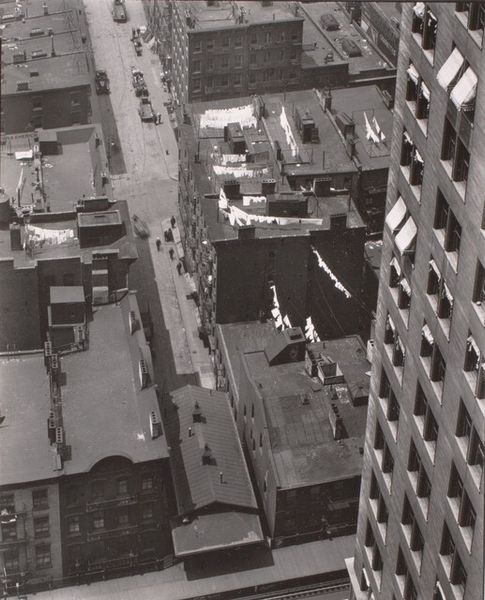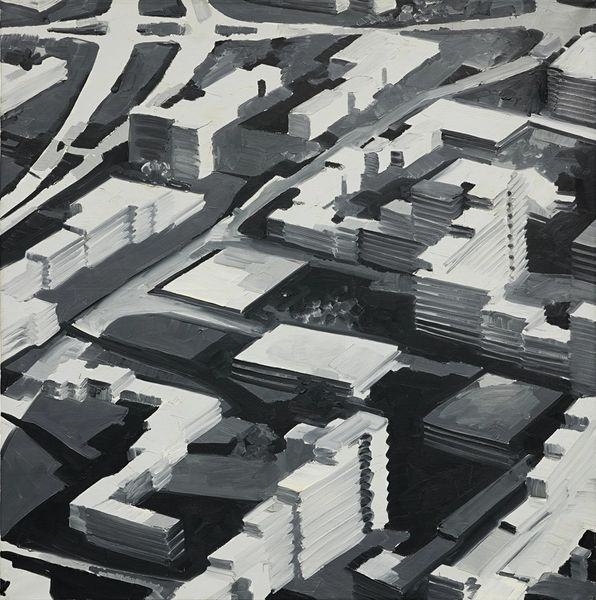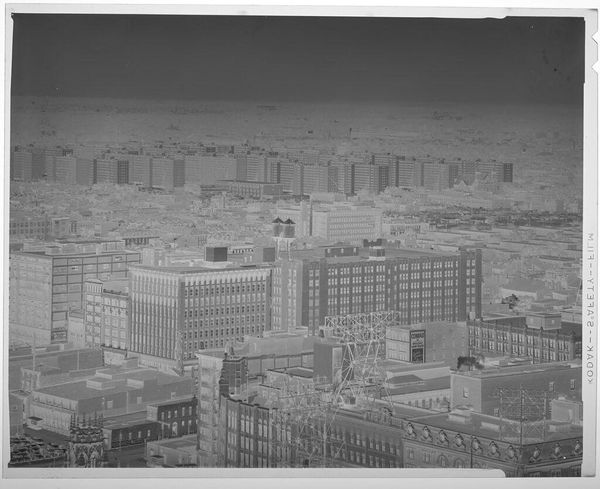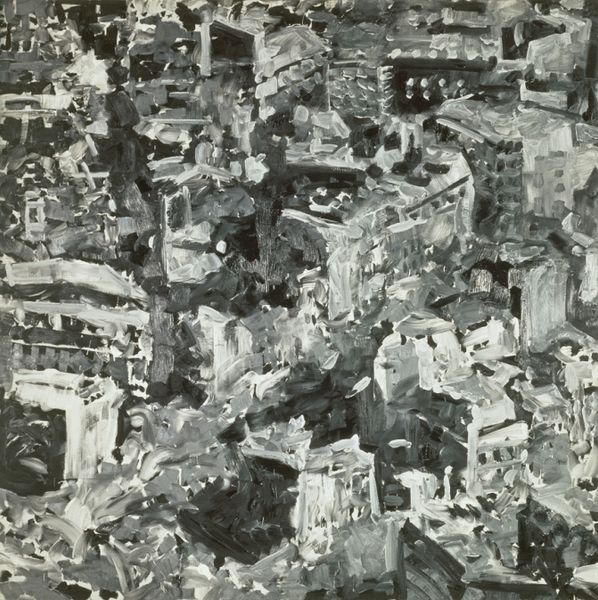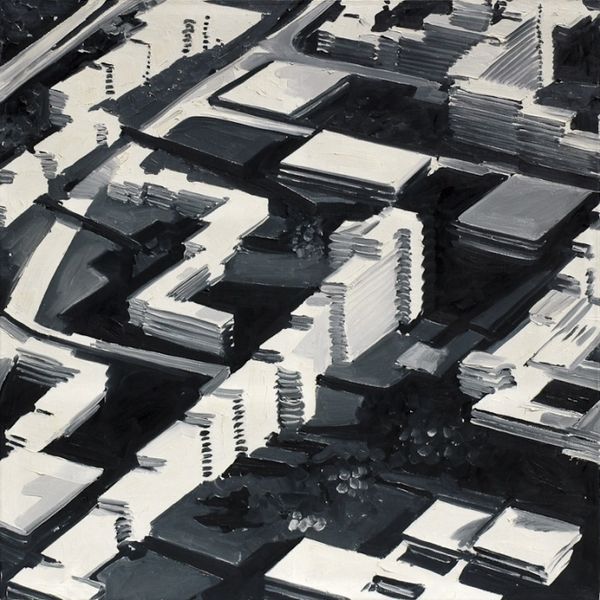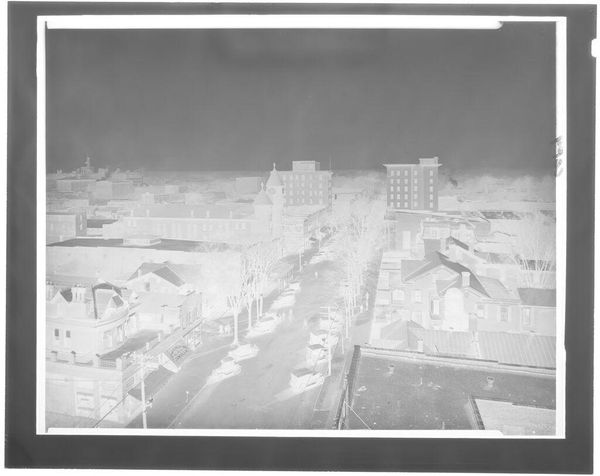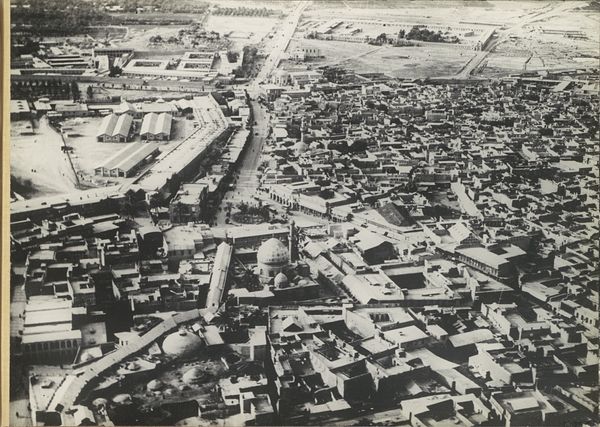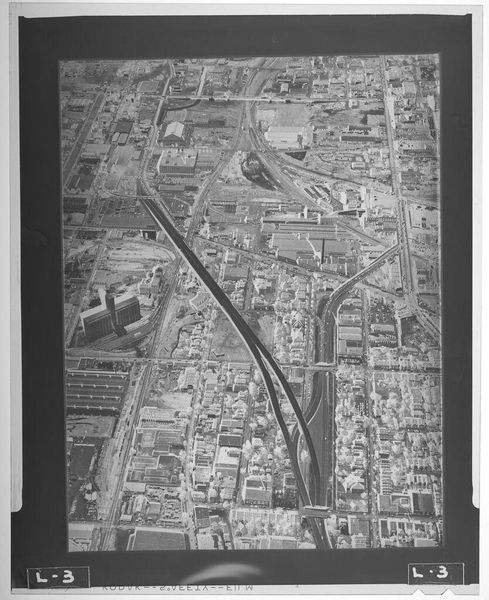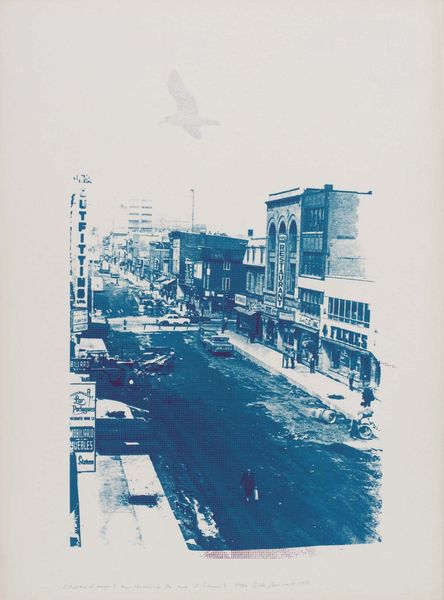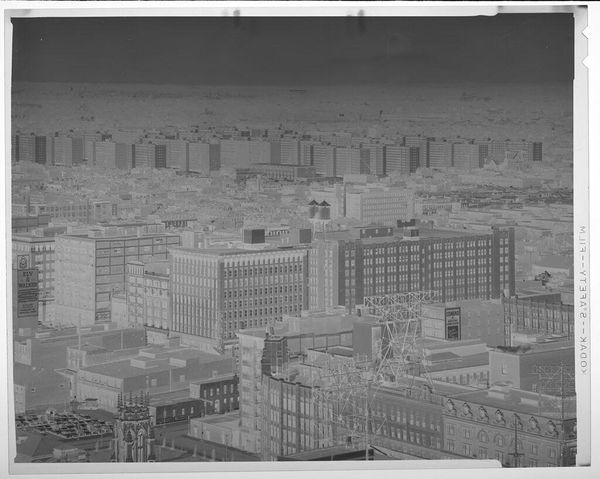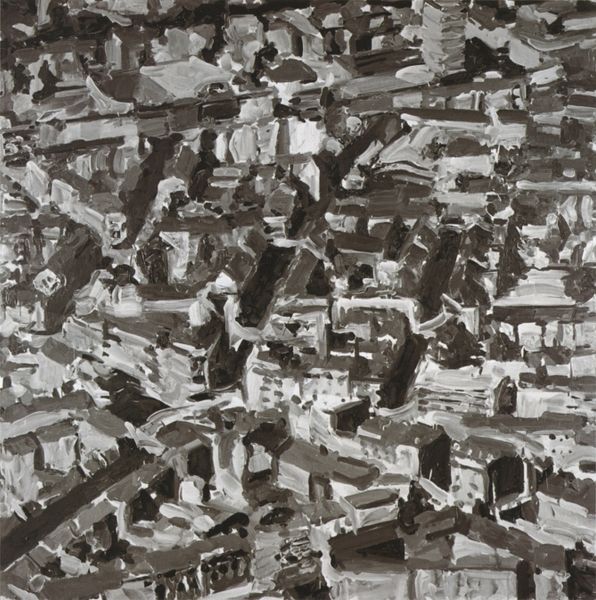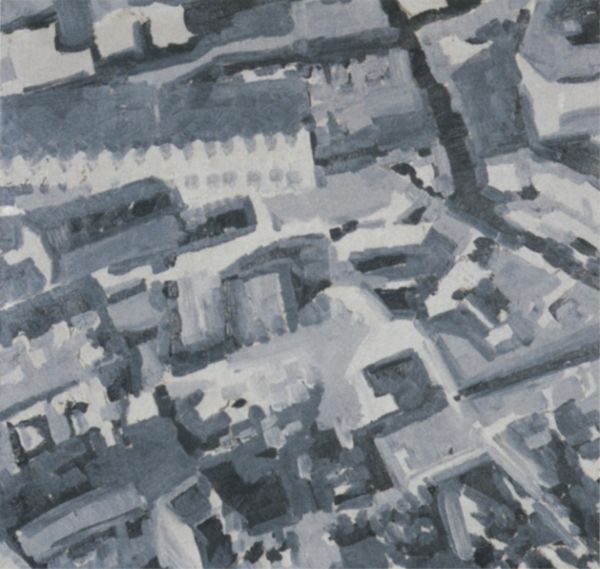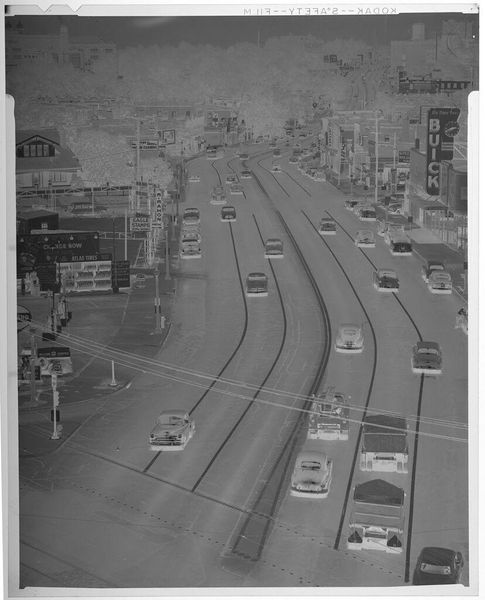
#
capitalist-realism
Copyright: 2019 Gerhard Richter - All Rights Reserved
Curator: Well, I’m immediately struck by the austerity of this work. It’s almost oppressive. Editor: You’ve keyed into something essential. We’re looking at Gerhard Richter’s “Townscape Madrid,” created in 1968. It’s an acrylic on canvas, rendered in monochrome. Richter took a photograph and then translated that photographic image into paint, which becomes a painting of a painting. Curator: So, it’s a remove from reality already, that photograph serving as a layer of interpretation before the paint even hits the canvas? It almost dehumanizes the urban landscape. All that architectural detail, flattened. Editor: Exactly. What symbols or stories do you glean from this kind of urban replication? How does it challenge our expectations of city life and urban design as hopeful projections for how humans interact with each other? Curator: There's this feeling of alienation inherent in urban life. These are places where people gather in great numbers but somehow remain distant from one another, anonymous and hidden. This rendering almost strips the city of its identity; the buildings could be anywhere, really. Editor: Indeed. Richter's work frequently dealt with Germany’s historical memory and how collective trauma shapes perception. He grew up in the shadow of World War II. Could that be casting a shadow here? Is there some suggestion of destruction in its monochrome palate? Curator: Absolutely. The choice of black and white also nods to the visual language of newsreels and historical documentation. The high angle mimics surveillance; maybe the city is always being watched. Perhaps there is the feeling that it is an aftermath of some disaster, or bracing for an unseen, approaching calamity. Editor: It makes me wonder, too, about the role of painting at this moment in history, in contrast to photography, which was, of course, so popular and evolving so quickly at the time. He is deliberately using a lens and reproducing this photography by painting it, so in effect making an argument for how painting can still provide access to history. Curator: It forces us to look, really look, at the structures and the underlying psychological impact of modern environments. Editor: A fitting endnote. It gives us much to ponder in terms of both its history and psychology, I think. Curator: Definitely, the cultural symbolism here feels dense. There's an invitation to probe deeper that stays with you.
Comments
No comments
Be the first to comment and join the conversation on the ultimate creative platform.
